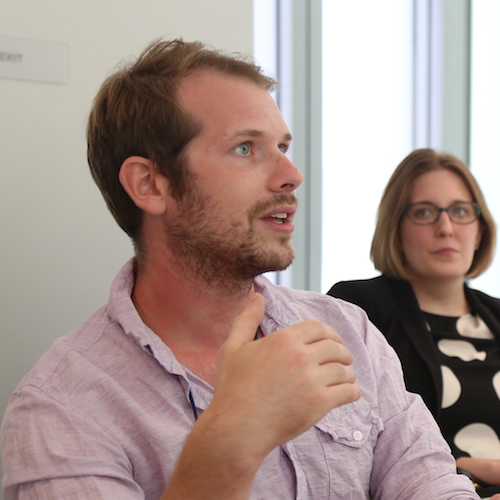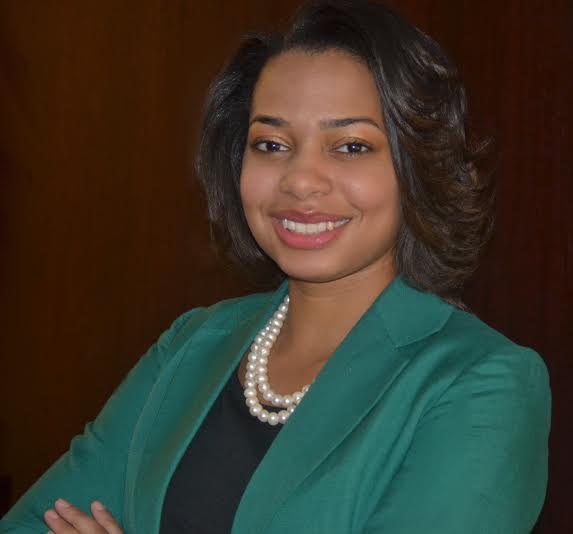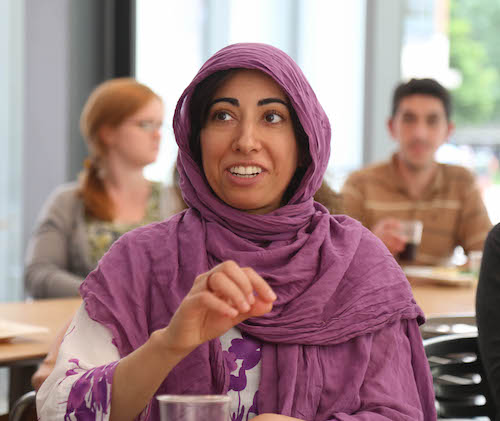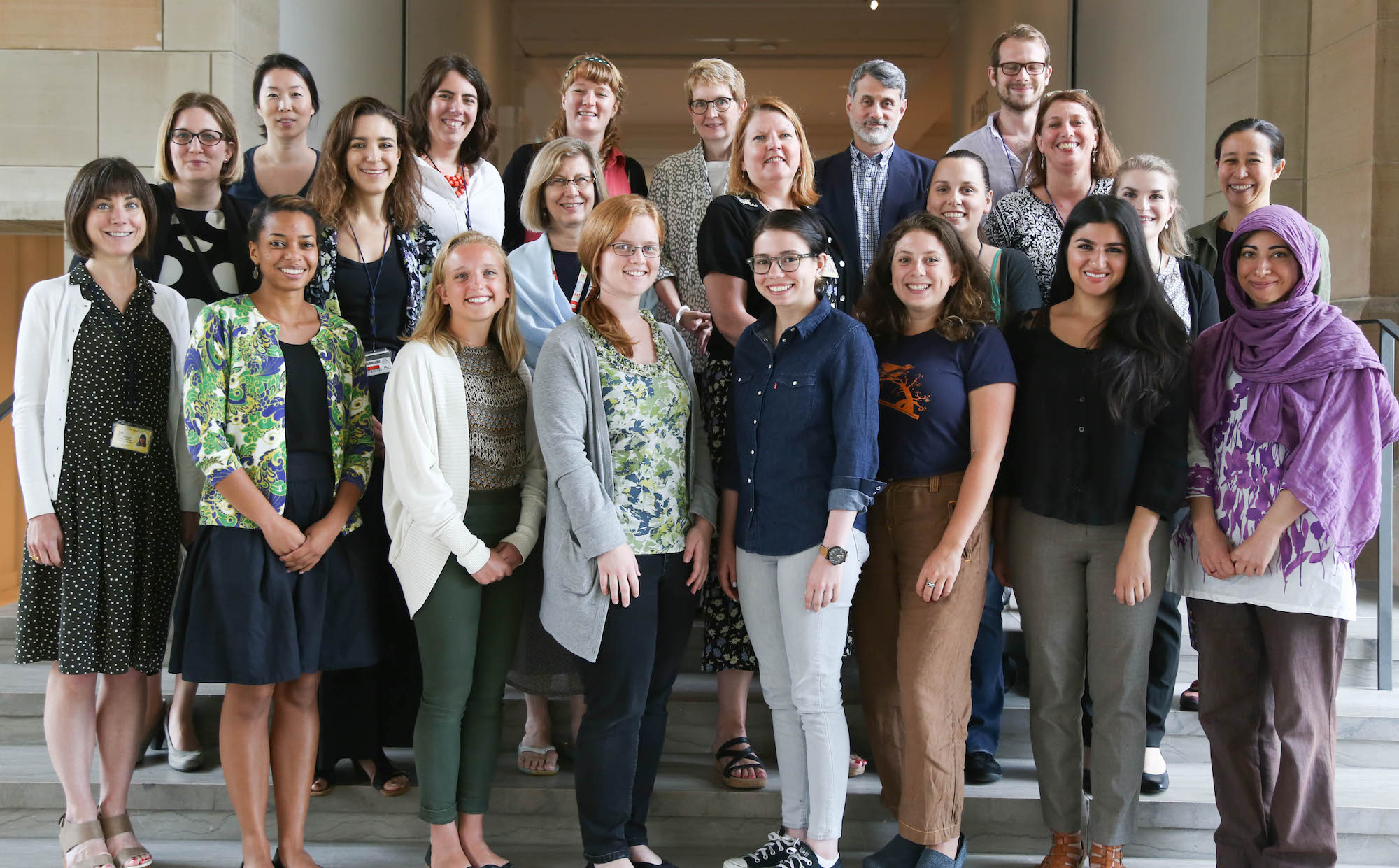In order to execute such a large project, however, U-M graduate and undergraduate students have worked hard alongside UMMA staff (team members pictured below) to document, research, and photograph more than 5,000 collections objects. With the support of UMMA curators, educators, and registrars—in addition to a generous grant from the Institute for Museum and Library Services—student research teams played a crucial role in improving the metadata of our collection items.
While the end product of their work will be rewarding for all, the process itself was rewarding for the researchers, too. Read below to hear the ways in which the intensive research process inspired and improved the studies of three assistants.
Jon Verney
 Jon Verney is a recent MFA graduate of the Penny W. Stamps School of Art & Design—specializing in photography.
Jon Verney is a recent MFA graduate of the Penny W. Stamps School of Art & Design—specializing in photography.
“I worked on photographs from a variety of different time periods, from early in photography's history (1844) to contemporary works from the 2000s.
“My experience researching [Carleton Emmons Watkins’ Down the Valley, Yosemite, California] was a profound and moving moment for me. Through the act of looking for more information about this image, I learned all about Watkins' life, which humanized the object I was researching. I felt an intense intimacy and newfound appreciation for this work, and as a photographer who is deeply interested in the human impulse to work with nature and natural systems, I gained a strong sense of kinship with the work and the artist who made it.
"I have already begun to incorporate the kind of data-mining and gathering that I've conducted for this job into my own practice and creative projects. I feel through working on this project, I have become better organized and able to efficiently compile information, and more confident in working within an art historical and curatorial environment.”
Bridget Grier
 After serving as an UMMA summer intern, Bridget Grier is now working as Operations Coordinator at the Smithsonian Associates in Washington, D.C..
After serving as an UMMA summer intern, Bridget Grier is now working as Operations Coordinator at the Smithsonian Associates in Washington, D.C..
“I learned a lot from working on this project, and am so grateful for the experience. I am drawn to a career in museums because I am interested in object-based storytelling.
"I loved learning about all of the artists, from the local Ann Arbor artists to famous artists like Picasso and Miro. I learned about different mediums, specifically printmaking techniques. My research on the objects offered a condensed history lesson on everything from biblical stories, to Russian film history, modern dance history, 20th century Latin American political history, and so much more.”
Talia Gangoo
 Talia Gangoo is Ph.D. student in Near Eastern Studies at the University of Michigan.
Talia Gangoo is Ph.D. student in Near Eastern Studies at the University of Michigan.
“The objects that I worked on fall under two main categories: objects of power and objects of prestige. The former includes minkisi, divination instruments, and masks while the latter encompasses items such as staffs, drinking vessels, and combs owned by chiefs, royals, and other elite members of Central African society.
“I became deeply fascinated by objects like minkisi and divination instruments that were the prerogative of the banganga, spiritual mediums who are believed to have the ability to communicate with both invisible, supernatural beings and deceased relatives and forebears.
“I had no way to anticipate this, but so much of what I learned while working [at UMMA] has informed my doctoral dissertation. My dissertation in Islamic Studies is an ethnographic/anthropological study that examines the myriad roles of contemporary Muslim saints, or Sufi masters. As someone who studies the world’s religions and belief systems, I began to think more generally about what motivates people to seek out figures like saints, shamans, and banganga in the first place. I began to see how these liminal, enigmatic, and charismatic spiritual figures share many of the same characteristics, transcending both affiliation and space.”

Hearing the researcher’s stories affirms that the process is just as important as its end product.
Stay tuned for the launch of the UMMA Exchange, coming soon!
